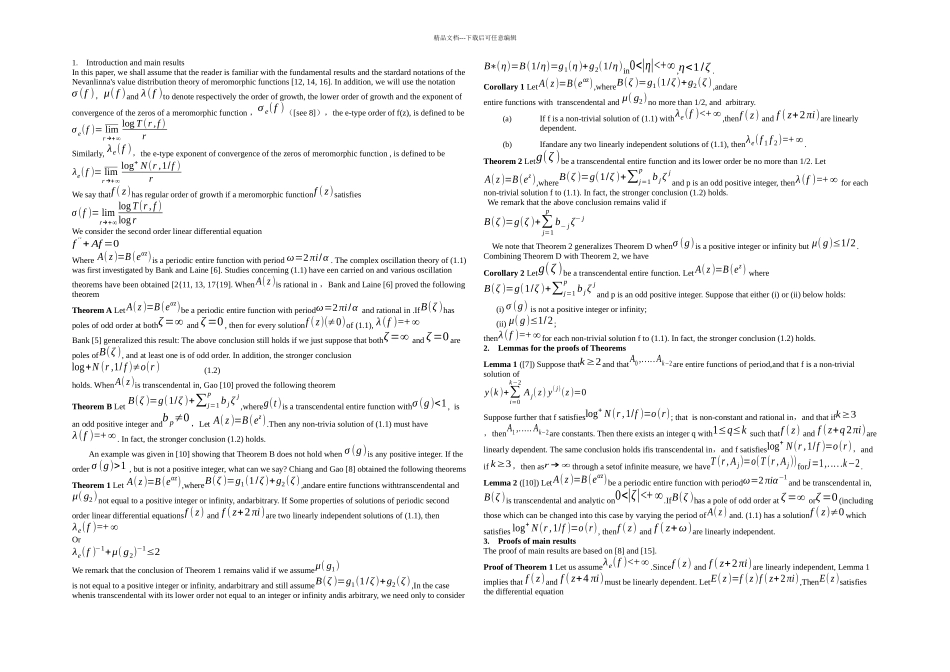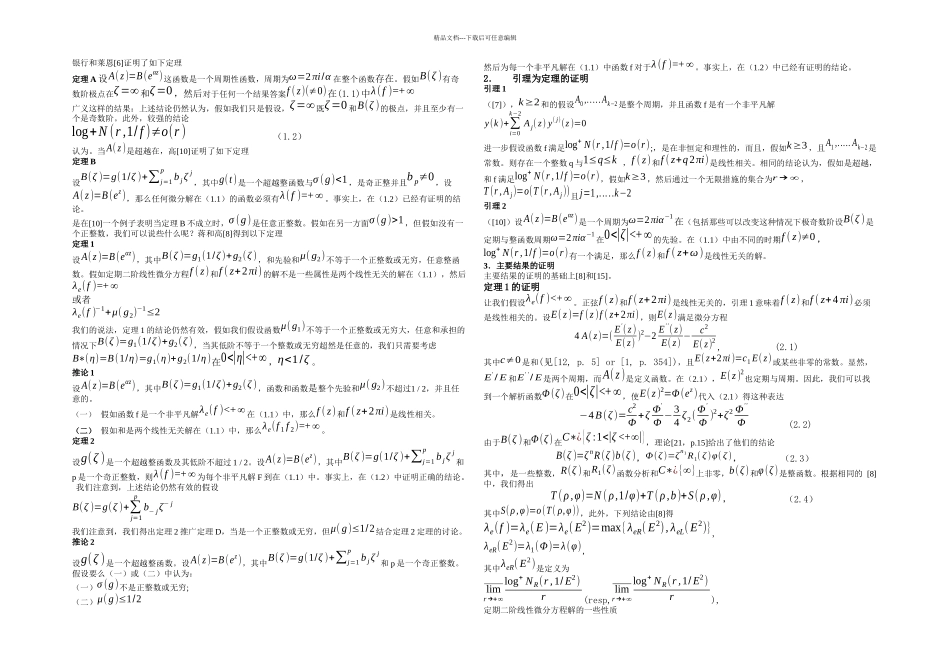精品文档---下载后可任意编辑1.Introduction and main resultsIn this paper, we shall assume that the reader is familiar with the fundamental results and the stardard notations of the Nevanlinna's value distribution theory of meromorphic functions [12, 14, 16]. In addition, we will use the notationσ (f ),μ( f )and λ(f )to denote respectively the order of growth, the lower order of growth and the exponent of convergence of the zeros of a meromorphic function ,σ e(f )([see 8]),the e-type order of f(z), is defined to be σ e(f )= limr →+∞log T (r ,f )rSimilarly, λe(f ),the e-type exponent of convergence of the zeros of meromorphic function , is defined to beλe(f )= limr →+∞log+ N(r ,1/f )rWe say thatf ( z)has regular order of growth if a meromorphic functionf ( z)satisfiesσ (f )= limr→+∞log T(r , f )log rWe consider the second order linear differential equationf ''+ Af =0Where A( z )=B(eαz)is a periodic entire function with period ω=2πi/α . The complex oscillation theory of (1.1) was first investigated by Bank and Laine [6]. Studies concerning (1.1) have een carried on and various oscillation theorems have been obtained [2{11, 13, 17{19]. WhenA( z )is rational in ,Bank and Laine [6] proved the following theoremTheorem A LetA( z )=B(eαz)be a periodic entire function with periodω=2πi/α and rational in .IfB(ζ )has poles of odd order at bothζ =∞ and ζ =0 , then for every solutionf ( z)(≠0)of (1.1), λ(f )=+∞Bank [5] generalized this result: The above conclusion still holds if we just suppose that bothζ =∞ and ζ =0 are poles ofB(ζ ), and at least one is of odd order. In addition, the stronger conclusionlog+N (r ,1/ f )≠o(r ) (1.2)holds. WhenA( z )is transcenden...


